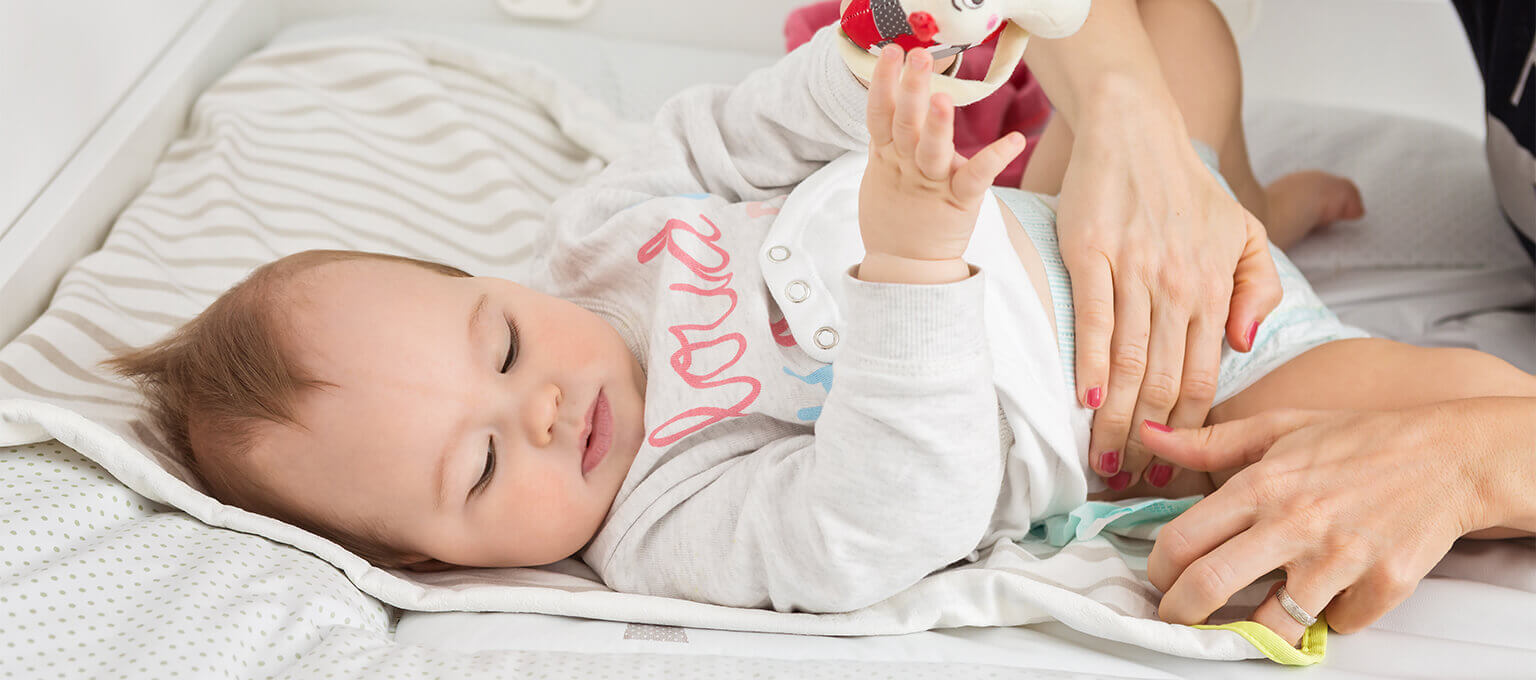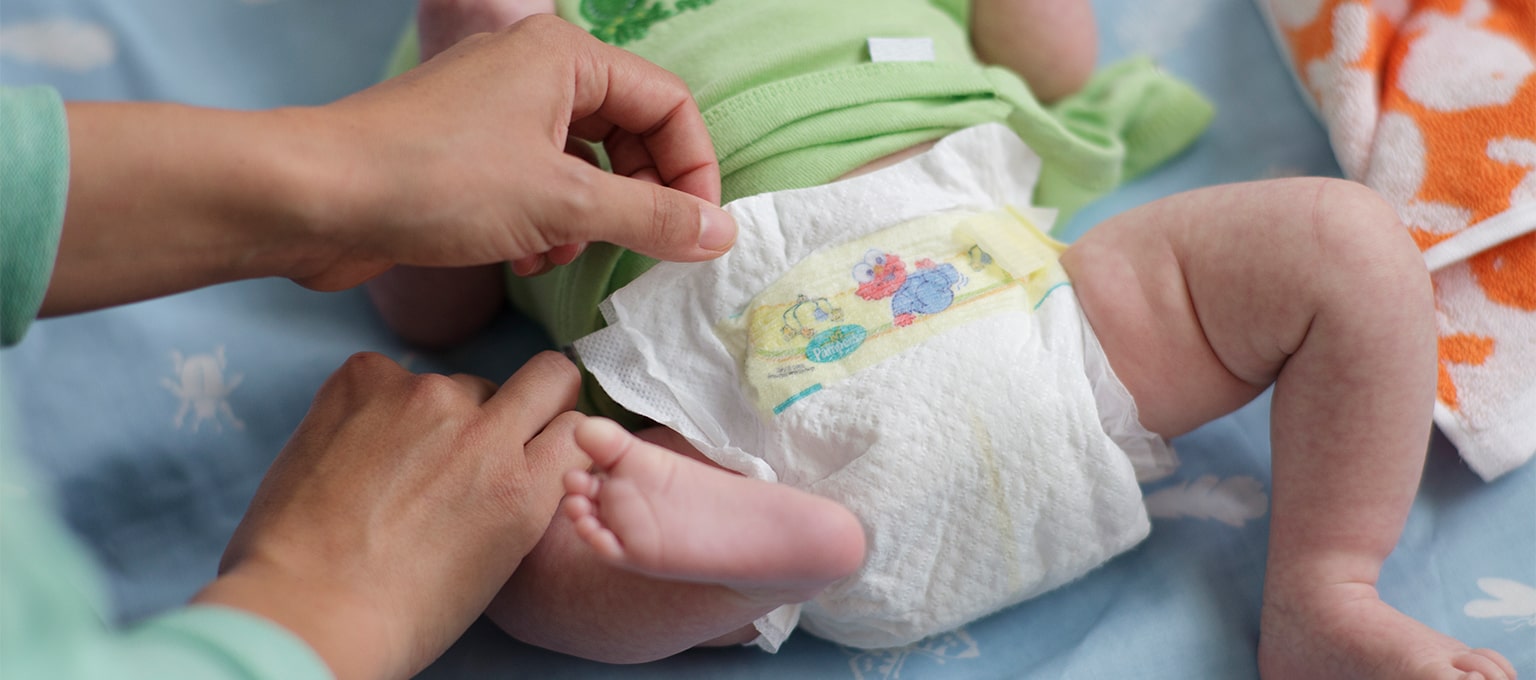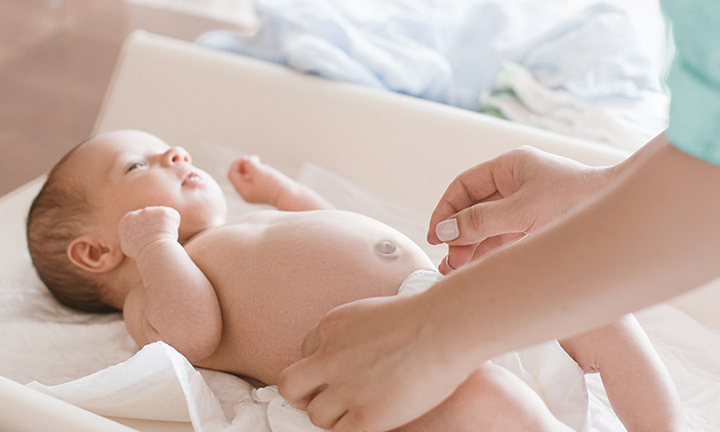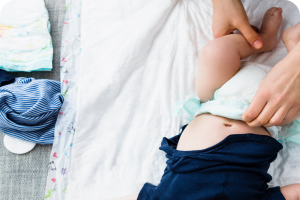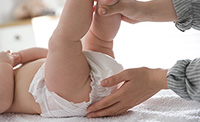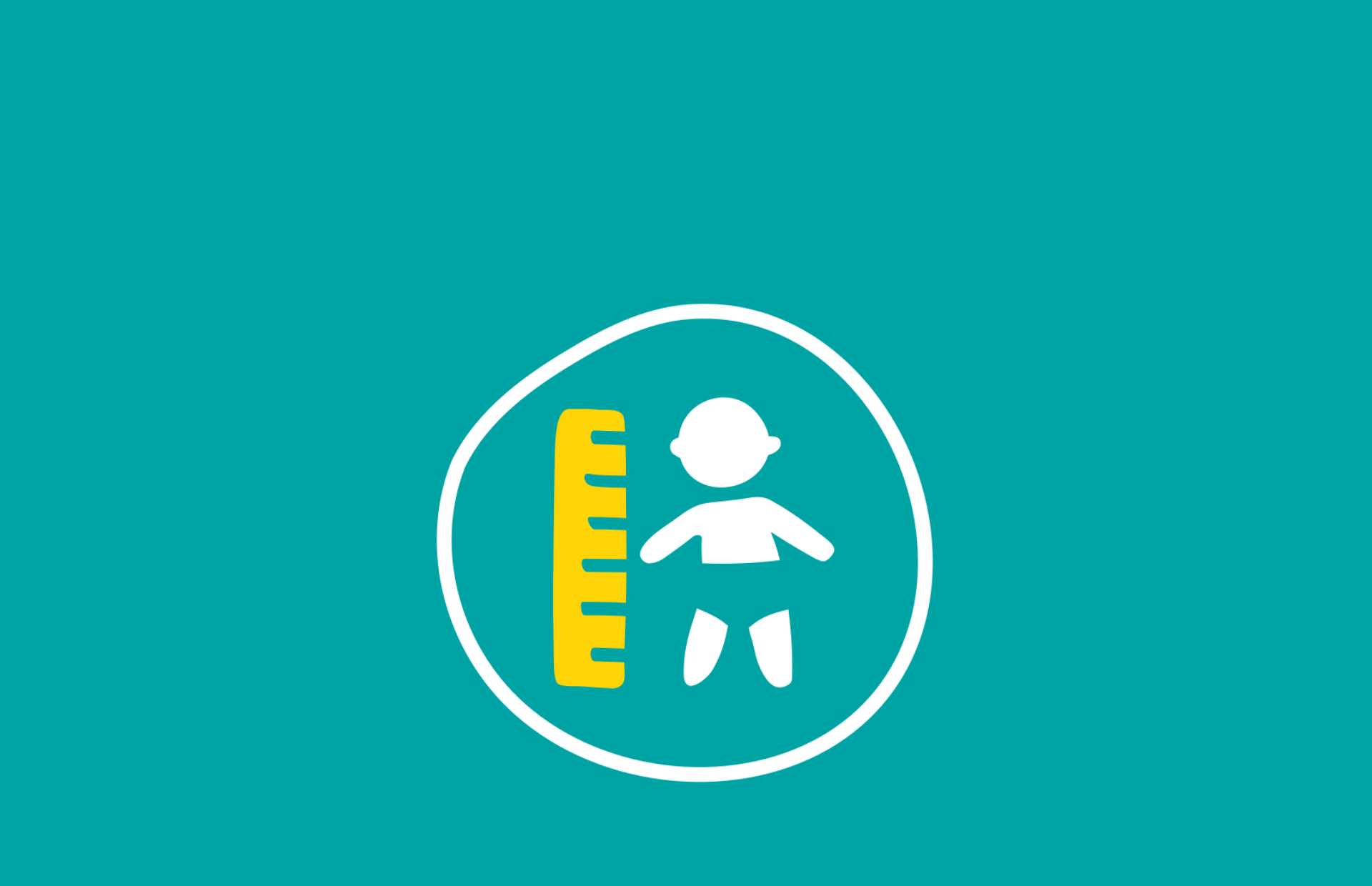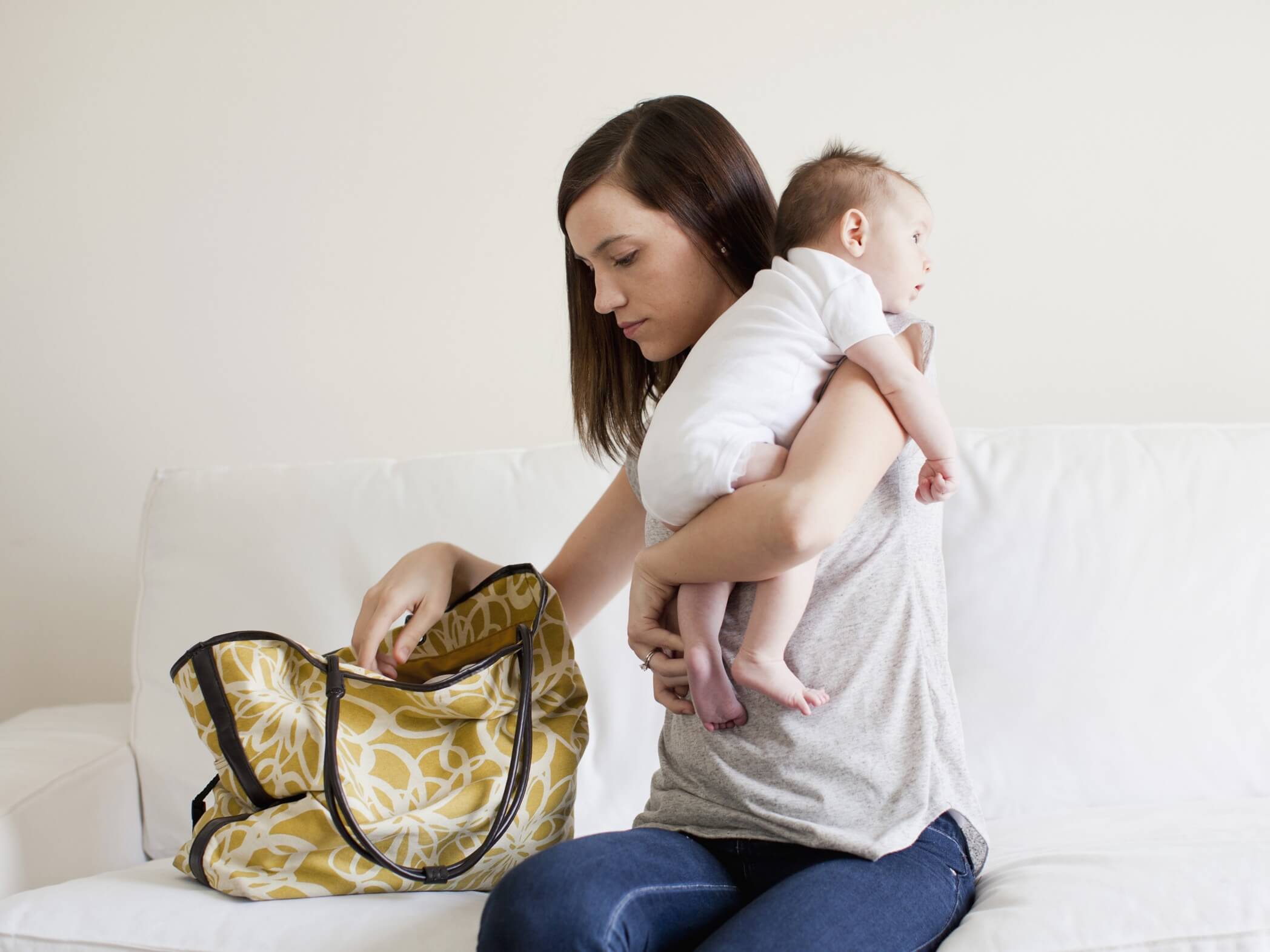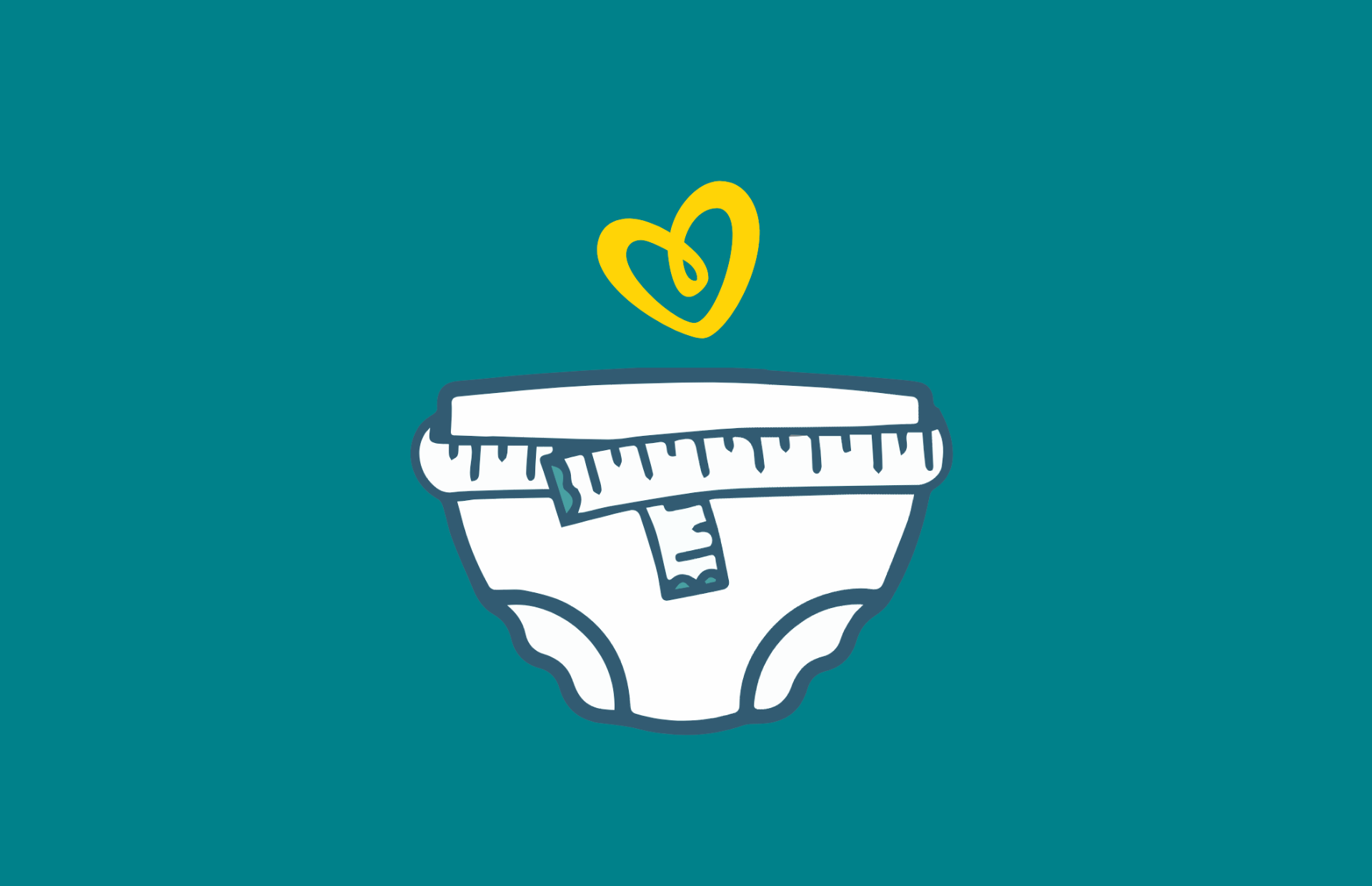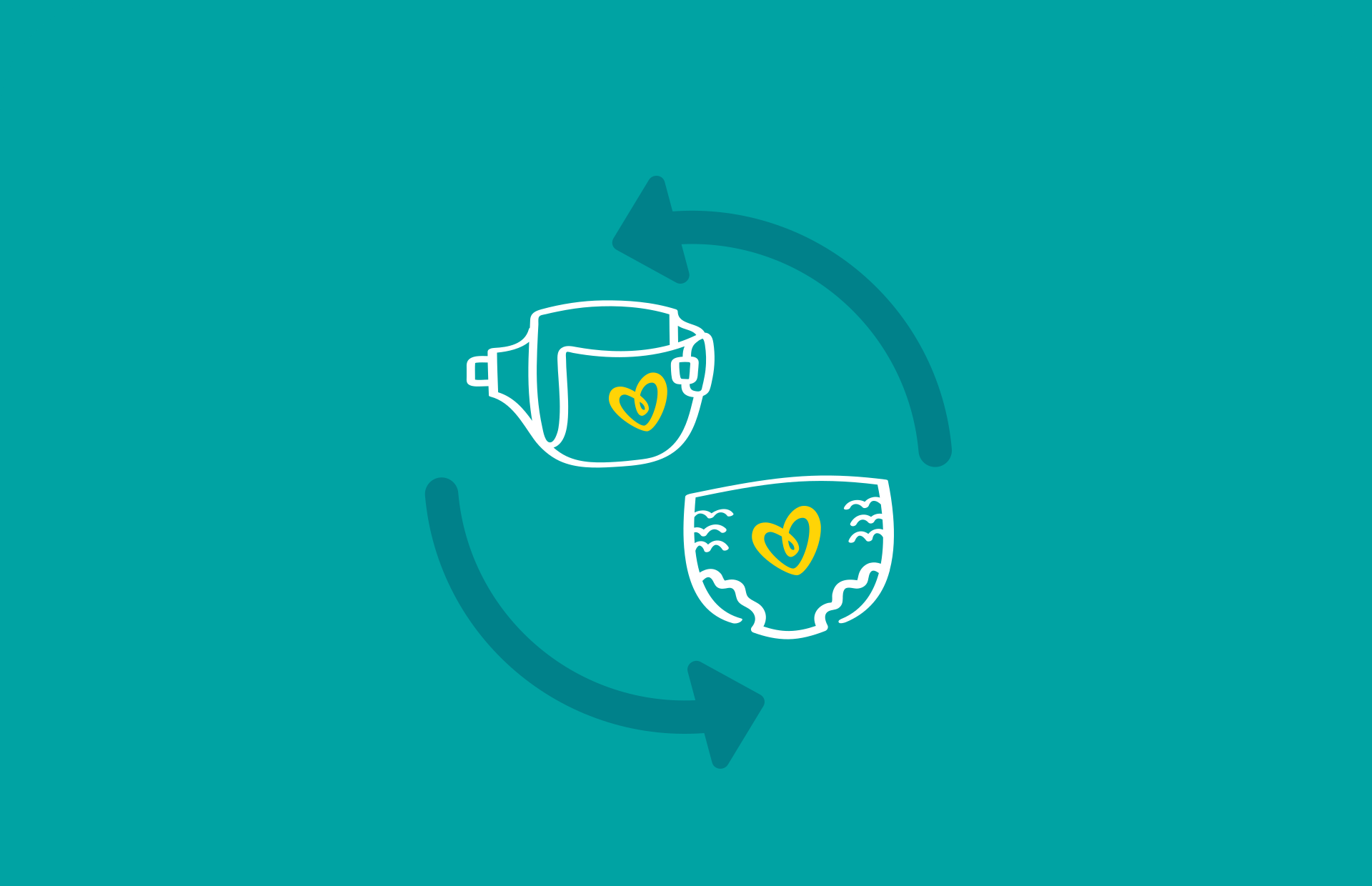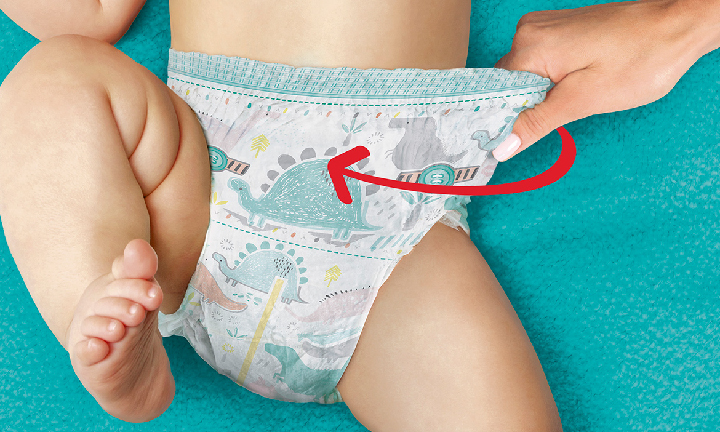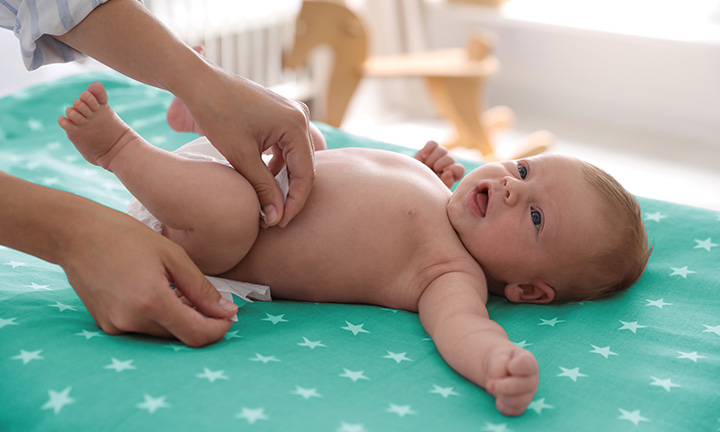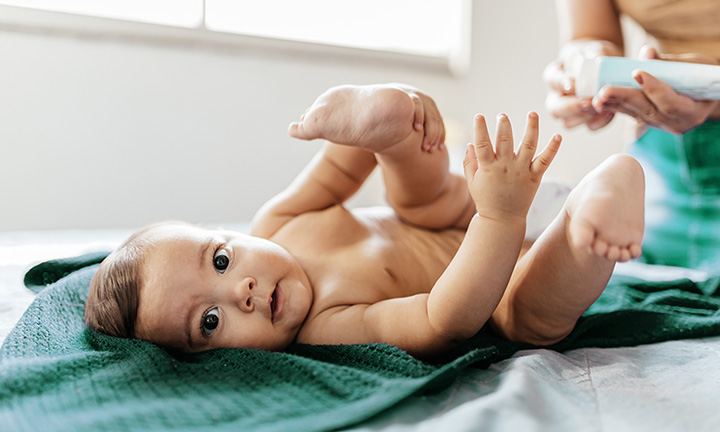
Most babies will have diaper rash (often also known as diaper dermatitis) at least once, even with superabsorbent diaper technology and frequent diaper changes. In most cases, mild diaper rash will clear up in a few days with simple treatment, and your baby’s skin will be back to normal.
5 Quick Tips for Diaper Rash Treatment & Prevention
Find out more about what causes diaper rash (hint: it’s not diapers), common symptoms, and how you can treat this condition as quickly as possible and prevent it from reoccurring.
What Is Diaper Rash?
Diaper dermatitis, also known as diaper rash, is one of the most common conditions among infants, affecting more than half of babies. A baby with diaper rash will have irritated, tender, and flaky skin in the diapered area.
Tip
Diaper rash happens to more than 50% of babies, so no need to fret if you start to notice the diaper area becoming irritated and sensitive. This rash can typically be treated in a few days but seek advice from your healthcare professional should the rash persist.
What Does Diaper Rash Look Like?
Common symptoms of diaper rash include:
Red or brown bumps which may be harder to see on darker skin tones, along with larger areas of sensitive or irritated skin around the diaper area or in the folds of your baby’s upper thighs
Peeling, flaking, or scaly skin
The affected area may look puffy and tender, and feel warm to the touch
Your baby seems irritable or fussy.
If the rash comes from a skin infection caused by yeast or bacteria, for example, then you might see more severe diaper rash signs, such as:
Blisters or open sores
Pus-filled blisters
Watery fluid or pus seeping from reddened patches.
Remember, it’s possible your baby may be experiencing something different than diaper rash. For example, cradle cap and eczema are two other common conditions that present with similar symptoms to diaper rash. More information on how to recognize those rashes can be found on our article about Baby Rash.
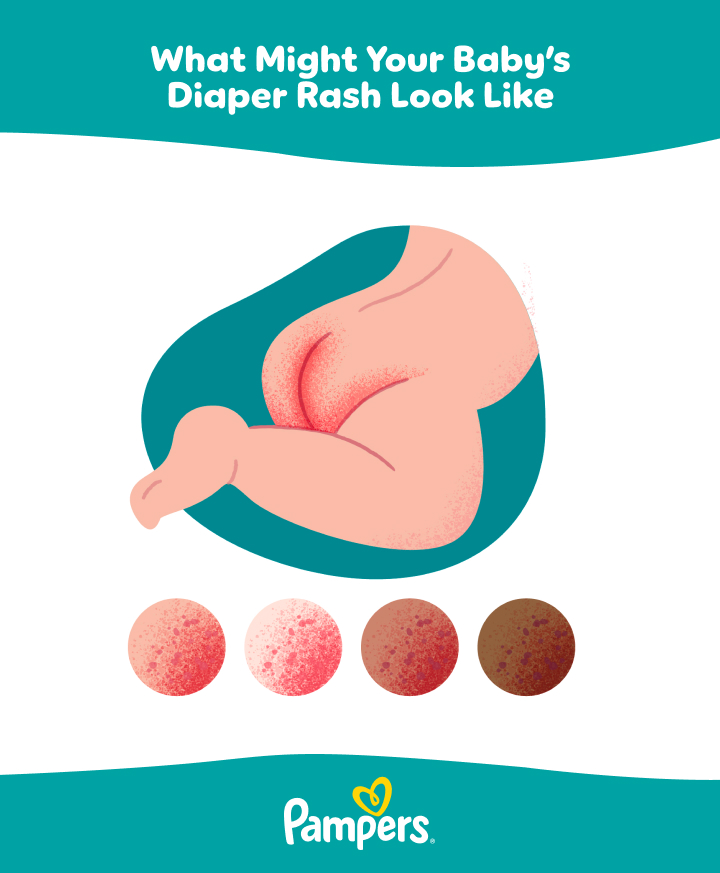
In Summary
Diaper rash is extremely common in infants, though it is not caused by diapers. Diaper rash can be caused by a variety of factors like an increase in skin pH, friction excess skin hydration, among others. Most diaper rashes will clear up in a few days but reach out to your healthcare professional if the rash is still present or worsens.
Diaper Rash & Causes
What Causes Diaper Rash?
Diapers themselves do not cause diaper rash, but even with frequent changes, diaper rash can still occur. The four main causes of rash are poo on the skin, overhydration, friction, and an imbalance in skin pH. Overhydration commonly occurs when prolonged wetness from urine weakens the skin, and friction tends to occur from tight-fitting diapers or clothing, which may lead to chafing and irritation.
Imbalanced skin pH, often affected by enzymes in stool, may weaken the skin’s protective barrier. Prolonged contact with stool or from diarrhea, particularly during extended diaper use, could further aggravate and irritate the skin causing a rash.
Teething, which can alter stool composition due to increased saliva, is an additional contributing factor. Other causes of rash in the diaper area may include bacterial, yeast, or viral infections, allergic reactions to new products, and improper diaper fit. Understanding these factors may help reduce the risk of diaper rash and keep your baby comfortable.
Types of Diaper Rash and Treatments
As we mentioned in the section above, various causes of rash may lead to different types of rash in the diaper area, including the common irritant diaper rash, yeast infection, bacterial infection, or allergic reactions. Here are some types of diaper rash, what they may look like, and the treatment options:
Irritant Diaper Rash
The most common diaper rash is caused by the following skin irritants:
.svg)
Mess on Skin
Sitting in a soiled diaper and being exposed to urine or stool for long periods of time, disrupting pH. Diarrhea can also bring the skin into frequent contact with loose stools
Sitting in a soiled diaper and being exposed to urine or stool for long periods of time, disrupting pH. Diarrhea can also bring the skin into frequent contact with loose stools
.svg)
Increased pH
Enzymes found in stool can increase the skin’s pH level, leading to skin irritation and redness as they break down the protective lipids and proteins in the skin
Enzymes found in stool can increase the skin’s pH level, leading to skin irritation and redness as they break down the protective lipids and proteins in the skin
.svg)
Overhydration
Extended periods of wetness in the diapered area can lead to overhydrated skin, which is more easily damaged, prone to chaffing, and leads to an increase in microbial growth
Extended periods of wetness in the diapered area can lead to overhydrated skin, which is more easily damaged, prone to chaffing, and leads to an increase in microbial growth
.svg)
Friction
A tight-fitting diaper or tight clothing that causes chaffing or rubbing
A tight-fitting diaper or tight clothing that causes chaffing or rubbing
What it looks like
Sensitive or irritated patches in the diaper area that may look pink, red, or darker than the surrounding area depending on your baby’s skin tone. Patches and bumps may be harder to see on darker skin tones. The folds near the groin will usually look normal.
What to do about it
Make sure to change your baby’s diaper regularly, keep the diaper area clean, and apply a diaper cream recommended by your child’s health care provider. It’s also a good idea to use a well-fitting highly absorbent diaper that isn’t too tight and doesn't chafe against your baby’s skin. It’s also important to choose wipes such as Pampers Sensitive with a pH-buffering capability to help maintain a balanced skin pH in the diapered area.
Yeast (Fungus) Infection
Another common type of diaper rash is a yeast infection, resulting from an overgrowth of fungus located in the digestive tract. If you’re wondering, “Can antibiotics cause diaper rash?” it’s important to note that a yeast infection can sometimes develop after a baby has completed a course of antibiotics, or if a breastfeeding mother has taken antibiotics. Antibiotics can kill both good and bad bacteria, leading to a yeast infection or diarrhea, which irritates the diapered area.
Symptoms and Treatment
What it looks like
Shiny, bright irritated patches with sharp edges. There may even be pink bumps or pimples that may be harder to see on darker skin tones, sores, or cracked skin that oozes or bleeds. A fungal diaper rash is often more severe when it appears in the folds of your baby’s groin.
What to do about it
If you suspect this kind of diaper rash, contact your baby’s healthcare provider, who may prescribe a topical antifungal cream. Be sure to wash your hands before and after any diaper change to prevent the spread of the fungus.
Bacterial Infection
Although cases are rare, diaper rash can come from a bacterial infection called impetigo, caused by either the staph or strep bacteria. This can lead to diaper rash or make an existing diaper rash worse.
Symptoms and Treatment
What it looks like
A strep infection will often show up as bright red or darker areas of skin around your baby’s anus, whereas a staph infection may appear as yellow crusting, weeping, or pimples.
What to do about it
If you believe your baby’s diaper rash may be due to a bacterial infection, see their healthcare provider for diagnosis and treatment. Don’t use an over-the-counter antibiotic ointment to treat the diaper rash, unless it’s recommended by your child’s provider.
Allergens
Your baby may also be sensitive or allergic to certain substances or ingredients, such as:
Dyes in soap, laundry detergent, or fabric softeners
Elastic in diapers
Ingredients in baby powder, lotions, oils, ointments, and creams
Food— allergens can be passed on to your baby through breast milk, or through anything your baby eats once they have started eating solid foods.
Symptoms and Treatment
What it looks like
A rash may show up shortly after exposure to the allergen.
What to do about it
Consider switching to another type of diaper, wipe, or cream for a two-week period to see if that helps clear up the rash. If a food allergy is suspected, remove that food from your baby’s diet. See your baby’s healthcare provider for a diagnosis, possible testing, and treatment recommendations.
Other Causes Of Diaper Rash
There are other conditions to look out for that can also cause diaper rash. For example, the rash may actually be seborrheic dermatitis, a condition in which the glands of the skin produce too much oil. Or the rash may be triggered by a genetic condition like acrodermatitis enteropathica, which is a zinc deficiency.
If you believe your baby’s diaper rash may be due to one of these conditions, or if you’re not sure what’s causing the rash, see your little one’s healthcare provider for a proper diagnosis and appropriate treatment.
How Long Does Diaper Rash Last?
The length of time it takes for diaper rash to go away depends on its severity. Mild diaper rash typically goes away after about 3 to 4 days with home treatment. However, some more severe diaper rashes may take longer or require treatment, such as antibiotics or antifungal creams. Your baby’s healthcare provider will be able to identify the severity of the diaper rash and the best course of action.
How to Prevent Diaper Rash?
Here are some ways to help prevent diaper rash:
Change your baby’s diaper regularly Help prevent diaper rash by keeping your baby’s skin as clean and as dry as possible.
Keep your baby’s skin clean Use alcohol-free and fragrance-free wipes, or an alternative solution of your choice.
Choose the right size diaper Make sure that your baby’s diaper fits properly. Consider using a slightly larger diaper while your baby is recovering from diaper rash.
Choose diapers with super-absorbent layers Select diapers that effectively draw moisture away from your little one’s skin to help keep them dry and comfortable. Pampers Swaddlers help protect against the four main causes of diaper rash. Swaddlers Blowout Barrier and Dual Leak-Guard Barriers help prevent leaks, while the BreatheFree Liner and LockAway Channels lock wetness and mess away for dry, healthy skin, also allowing your baby’s skin to breathe and reducing friction. On top of that, these diapers are gentle on delicate skin and have soft stretchy sides for freedom of movement.
Let your baby’s skin breathe Let your baby’s skin breathe with breathable disposable diapers that promote airflow, reducing moisture and irritation while keeping them comfortable, even during tummy time.
When to Contact Your Healthcare Provider
Mild Diaper rash generally goes away after a few days with home treatment and by following our prevention measures listed above. However, call your little one’s healthcare provider if you notice the following:
A diaper rash that won’t go away, lasts longer than a few days, or gets worse
Your baby’s diaper rash is bleeding, has blisters, or pus-filled sores
They develop a bright red rash, edged with red spots after taking antibiotics
Your baby develops a fever with the rash
The rash is painful.
Featured Products
FAQs at a Glance
What is best to treat a diaper rash?
Most mild cases of diaper rash will clear up within a few days with
- frequent diaper changes
- using breathable disposable diapers
- using an ointment recommended by a health care provider.
Why does my baby suddenly have a diaper rash?
Diaper rash is common in babies, and the four main causes of rash are stool on the skin, overhydration, friction, and an imbalance in skin pH. Ensure you change your little one’s diaper frequently to ensure stool and urine don’t stay on the skin, clean your baby’s diaper area, and use breathable, well-fitted diapers to help prevent diaper rash from recurring or worsening.
If you have any concerns about the rash in your baby’s diaper area, contact their healthcare provider.
How long do diaper rashes take to heal?
Mild diaper rashes usually go away after about 3 days. If your baby’s rash doesn’t go away or it gets worse, contact their healthcare provider.
How do you know if a diaper rash is fungal or bacterial?
A fungal diaper rash usually appears as shiny, bright irritated patches with sharp edges. You may notice pink bumps or pimples that may be harder to see on darker skin tones, and sores or cracked skin that oozes or bleeds. A bacterial infection may be caused by strep or staph bacteria. A strep infection will often show up as bright red or darker areas of skin around your baby’s anus, whereas a staph infection may appear as yellow crusting, weeping, or pimples.
If you’re unsure about the type of diaper rash your baby has, contact their healthcare provider for a diagnosis and treatment options.
Does diaper rash itch?
The causes of diaper rash (stool on the skin, overhydration, friction, and an imbalance in skin pH), often leave a baby’s skin irritated which may cause some itching or discomfort in the area. Ask your baby’s healthcare provider for treatment options that may help soothe any discomfort in the diaper area.
The Bottom Line
Remember that a diaper rash is not caused by the diaper itself but is often linked to four main factors: overhydration, friction, imbalanced skin pH, and prolonged contact with stool. With help from your child’s healthcare provider, you can receive an expert diagnosis and treatment for managing symptoms.
Consider trying our Pampers® Swaddlers and Pampers® Sensitive™ Wipes together as a diapering regimen. These two powerhouse products are scientifically demonstrated to work together to balance pH levels, improving overall skin health and providing the ultimate comfort for your baby.
Download our Pampers Rewards App to save on your Pampers Diapers and Wipes purchases.
How We Wrote This Article
The information in this article is based on the expert advice found in trusted medical and government sources, such as the American Academy of Pediatrics and the American College of Obstetricians and Gynecologists. You can find a full list of sources used for this article below. The content on this page should not replace professional medical advice. Always consult medical professionals for full diagnosis and treatment.
American Academy of Pediatrics. Caring for Your Baby and Young Child: Birth to Age 5, 7th ed. (New York: Bantam Books, 2019).
Cleveland Clinic. “Diaper Rash (Diaper Dermatitis).”
Healthy Children. “Common Diaper Rashes & Treatments.”
Kids Health. “Diapering Your Baby.”
Mayo Clinic. “Diaper Rash.”
